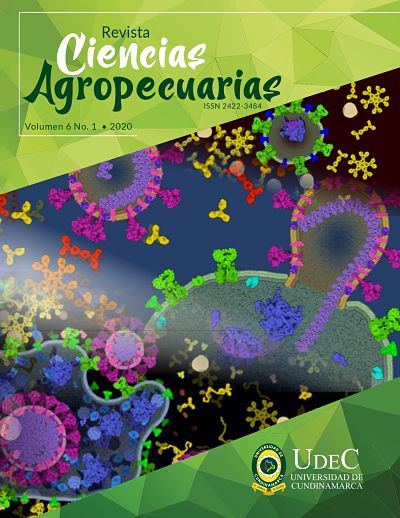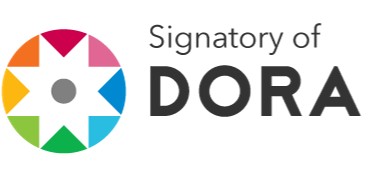Productive performance and meat quality in broiler chickens using tropical wheat (Coix Lacryma Jobi)
DOI:
https://doi.org/10.36436/24223484.315Keywords:
producción avícola, calidad de carne, dieta alternativa, rentabilidad.Abstract
The objective of this research was to evaluate the effect of the inclusion of tropical wheat (Coix Lacryma Jobi) on the production indices and meat quality of 1-day-old Cobb 500 broiler chickens in the Veracruz parish, Puyo canton, Pastaza province, Ecuador. A completely randomized block design was used; the trial lasted 42 days, divided into 4 treatments and 5 repetitions. Treatments with different inclusion levels (20%, 30%, 40%) and a control (0%) were used. In the initial stage, they presented a weight gain of 382.1 g vs. T0 = 334.5 g, and a feed conversion ratio of 1.04 vs. T0 = 1.17. In the growth stage, a feed conversion ratio of 1.23 vs. T0 = 1.29 was obtained, and in the fattening stage, a weight gain of 1289.84 g vs. T0 = 1.29 was obtained. T1 = 1243.98 g, feed conversion of 1.06 vs. T1 = 1.66, with 2% mortality in the growth and fattening stage. The European Efficiency and Ingalls-Ortiz Indices were evaluated, obtaining values of 401.18 and 1.45, respectively. For carcass yield, T3 = 1864.2 g, compared to the other treatments. In the physicochemical tests, better results were obtained with T2 with a pH = 6.02 vs. T3 = 5.84, color and water retention capacity 46.48% vs. T1 = 23%, and better profitability with T3. Concluding that a 40% inclusion of tropical wheat in broiler diets helps to improve zootechnical parameters, meat quality and economic performance.Downloads
References
Barragán I. Rendimiento de la canal de pollos de engorda adicionado a la dieta germinado de Triticale (Triticosecale wittmack) hidropónico. Tesis de licenciatura, Universidad Autónoma Agraria “Antonio Narro”, Saltillo, Coahuila (México). 2005.
Castillo A. Sustitución parcial de maíz por harina de lágrima de Job (Coix lacryma jobi) en la dieta de pollos en Pucallpa. Tesis de licenciatura, Universidad Nacional de Ucayal, Pucallpa (Perú). 2011.
FAO. División de Producción y Sanidad Animal. 2014. Disponible en: http://www.fao.org/ag/againfo/themes/es/meat/home.html
Herrera GSM, Díaz CA, Macías VJ, Solís BT, Muñoz RG. Comportamiento productivo de pollos que se alimentaron con granos tostados de Cajanus cajan. Arch. Zoot. 2016;65(250):235-239. https://doi.org/10.21071/az.v65i250.494
Más EG, Molinari OG. Guía ilustrada de yerbas comunes en Puerto Rico. 2006. Disponible en: https://www.nrcs.usda.gov/Internet/FSE_DOCUMENTS/nrcs141p2_036968.pdf
Orellana J. El gremio avícola nacional, sus acciones, incidencias de las mismas y la necesidad del fortalecimiento gremial. Corporación Nacional de Avicultores del Ecuador “CONAVE”, Quito. 2007.
Ortiz A. Factores que influencian la asociatividad en las pymes del sector avícola. 2016. Disponible en: https://repositorio.flacsoandes.edu.ec/xmlui/handle/10469/9247
Ottoboni LM, Leite A, Targon MLN, Crozier A, Arruda P. Characterization of the storage protein in seed of Coix lacryma-jobi var. Adlay. J. Agric. and Food. Chem. 1990;38(3):631-635. https://doi.org/10.1021/jf00093a010
Qiao M, Fletcherd L, Smith DP, Northcutt JK. The effect of broiler breast meat color on pH, water-holding capacity, and emulsification capacity. Poul. Sci. 2001;80(5):676-680. https://doi.org/10.1093/ps/80.5.676
Raulin J, Adrian J, Rerat A. Composition and feeding value of Job’s tears grass oadlay (Coix lacryma jobi). Arch. Venezol. Nut. 1955;6(1):3-21.
Reinoso C, Del Rocío J, Tipán O, Margoth R. Evaluación de las semillas de “lágrimas de job” (Coix lacryma-jobi) para la alimentación de pollos parrilleros en la granja experimental “bioalimentar” en el
sector Pasa, provincia Tungurahua. Tesis, Universidad Técnica de Cotopaxi, Ecuador. 2010. Disponible en: http://repositorio.utc.edu.ec/handle/27000/2881
Ruiz D, Álvarez R, Villalba D, Cubiló, D. Características de la canal y de la carne de pollos ecológicos criados en sistemas de producción y edad de sacrificio diferentes. 2018. Disponible en: https://www.
wpsa-aeca.es/aeca_imgs_docs/ruiz.pdf
Schonberger F. Análisis del mercado de maíz para el sector avícola del Ecuador. Tesis de licenciatura, Universidad Tecnológica Equinoccial, Quito (Ecuador). 2011. Disponible en: http://repositorio.ute.edu.ec/handle/123456789/9334
Tanaka T, Takatsuto S. Sterols in the seeds of job’s tears (Coix lacrymajo bivar. ma-yuen). J. Oleo. Sci. 2001;50(12):957-960. https://doi.org/10.5650/jos.50.957
Downloads
Published
How to Cite
Issue
Section
License
Copyright (c) 2020 Revista Ciencias Agropecuarias

This work is licensed under a Creative Commons Attribution-NonCommercial-NoDerivatives 4.0 International License.







